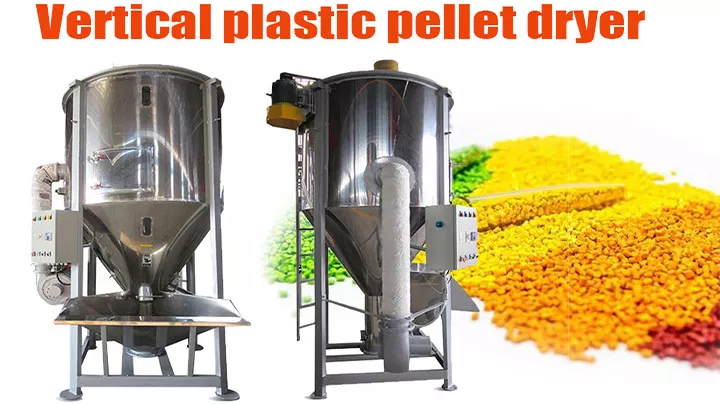
The vertical plastic pellet dryer, also known as a hopper dryer, is a high-efficiency industrial drying machine designed to remove moisture from plastic raw materials before processing.
This large vertical plastic dryer is widely used in the plastic industry, especially for injection molding, extrusion, and recycling. It helps pre-dry plastic pellets before production to avoid common quality issues like bubbles, water marks, silver lines, and cracking during molding or extrusion.
The machine features an intelligent temperature control system, keeping temperature fluctuations within ±3%. The body is made of stainless steel, making it corrosion-resistant and suitable for long-term use.
Shuliy offers models from 500kg to 5000kg, meeting the needs of both small workshops and large industrial production lines.

Product features of plastic pellet drying machine
- Mixing and drying are carried out simultaneously. The material is continuously kept flowing in the drying process. This can make the heat penetrate more evenly. And the drying time is short and not easy to knot fast.
- Double-layer barrel design. The inner layer and material contact parts are all made of stainless steel. The middle sandwich is installed with special insulation material. So it can achieve the effect of safety and energy saving.
- The special high-frequency heater has the characteristics of fast heating and low power consumption.
- Equipped with an intelligent temperature control system, precise temperature is controlled within ±3°C, effectively preventing overheating or material degradation, and ensuring stable drying quality.
- Many models and large capacity. The capacity of 0.5 tons, 1 ton, 1.5 tons, 2 tons, 3 tons, and 5 tons of the vertical plastic pellet dryer the stock for customers to choose from.
- One machine with two uses. When it is not needed to dry, just turn off the “heating switch” and “fan switch”.
- Vertical hopper design. Compact structure with a small footprint. Uses gravity feeding for easy operation and space-saving installation.
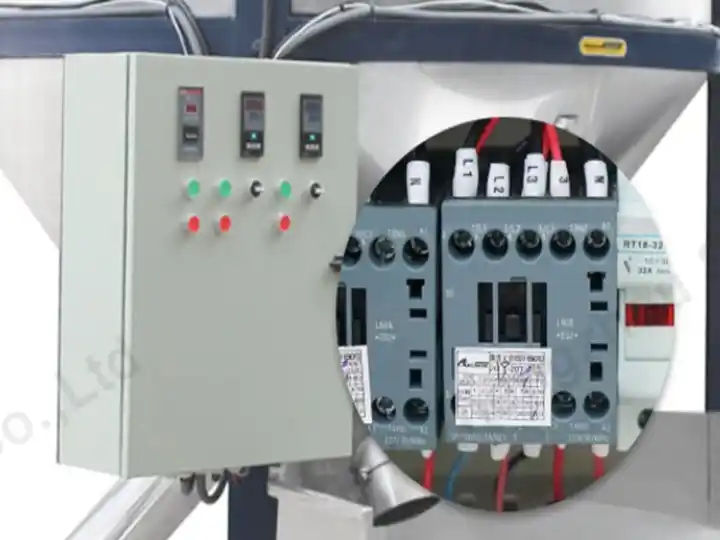
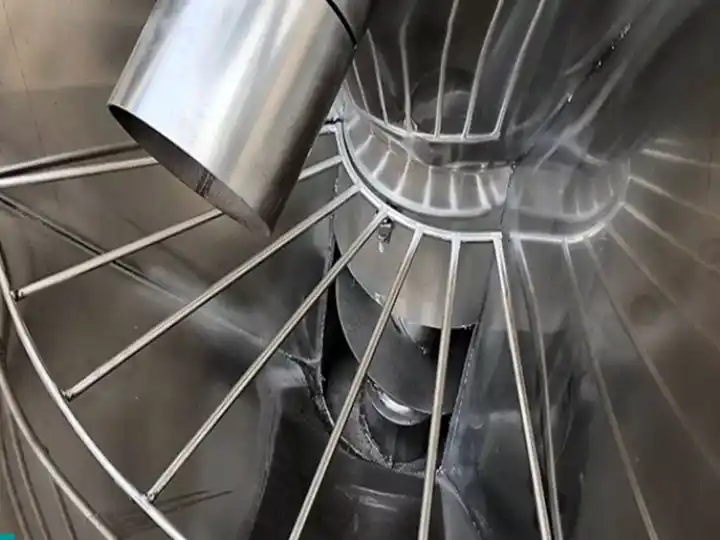
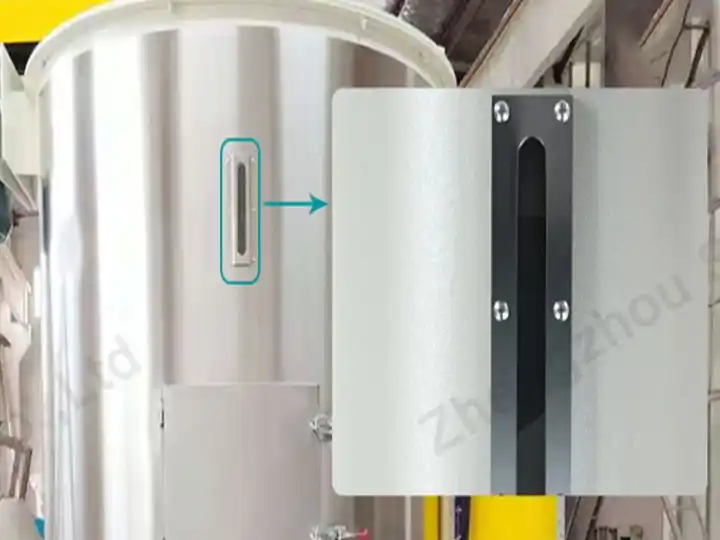
Technical parameters of plastic pellet dryer
| Model | Capacity(kg) | Motor power | Heating power | rotate speed(r/min) | Overall dimensions(cm) |
| Shuliy-500 | 500 | 3 | 12 | 350 | Diameter120*235 |
| Shuliy-1000 | 1000 | 4 | 20 | 350 | Diameter160*265 |
| Shuliy-1500 | 1500 | 4 | 20 | 350 | Diameter170*315 |
| Shuliy-2000 | 2000 | 5.5 | 30 | 350 | Diameter175*355 |
| Shuliy-3000 | 3000 | 7.5 | 40 | 350 | Diameter220*385 |
| Shuliy-5000 | 5000 | 11 | 50 | 350 | Diameter240*435 |
These are the specific parameters of the vertical plastic pellet dryer. Different models have different machine capacities. The minimum machine capacity is 500kg, and the maximum machine capacity is 5000kg. So you can choose the right machine according to your needs.
By the way, besides the plastic pellet dryer, we also have the belt dryer machine, microwave dryer, and heat pump drying room for sale. If you need it, please feel free to contact us.
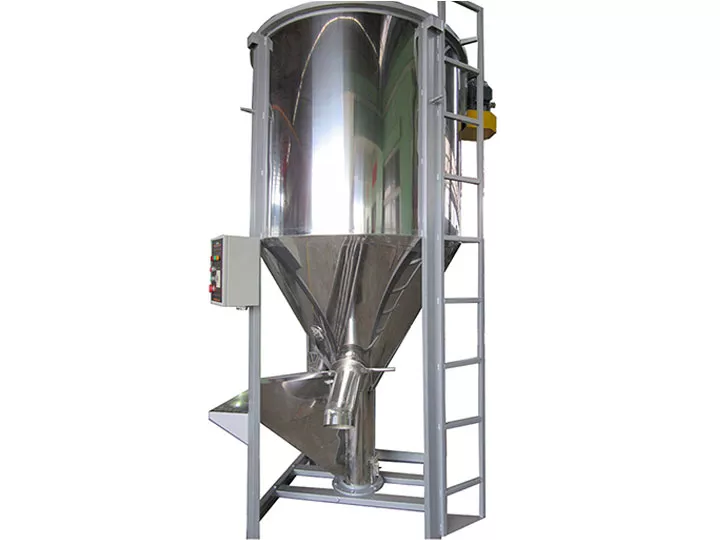
Application scope of the plastic pellet dryer
Types of Materials
- Plastic granules
- Plastic flakes
- Crushed plastic materials
- Recycled plastics
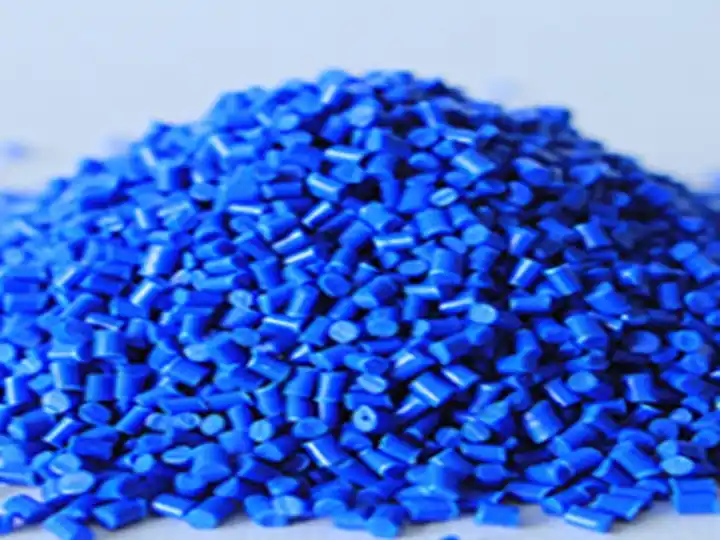

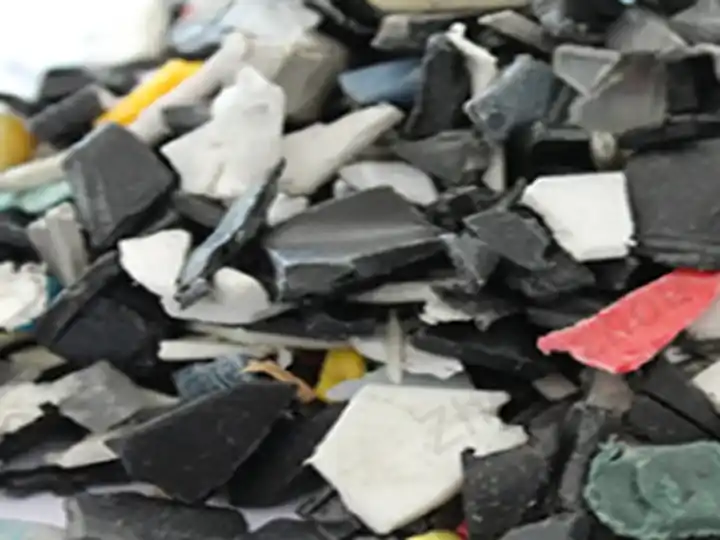
Applicable Industries
- Plastic pelletizing (granulation)
- Plastic modification
- Plastic recycling
- Injection molding & extrusion pre-treatment
Types of Plastics Suitable for Drying
Common Thermoplastics
- PP (Polypropylene)
- PE (Polyethylene – LDPE, HDPE)
- ABS (Acrylonitrile Butadiene Styrene)
- PS (Polystyrene)
- PVC (Polyvinyl Chloride)
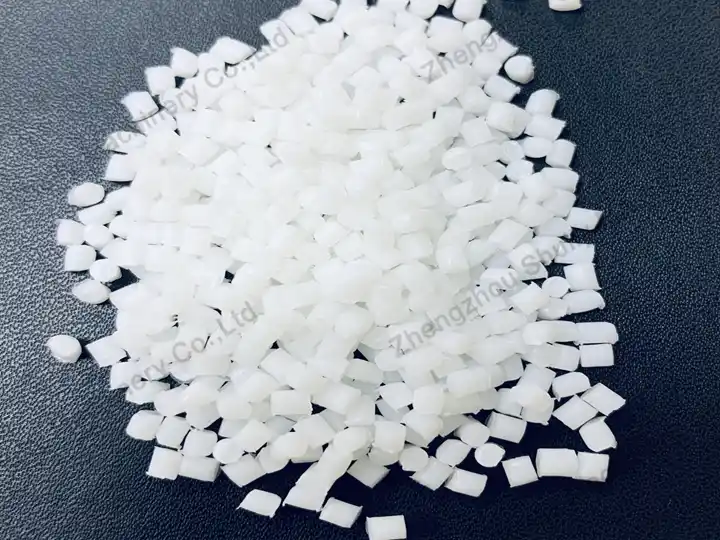
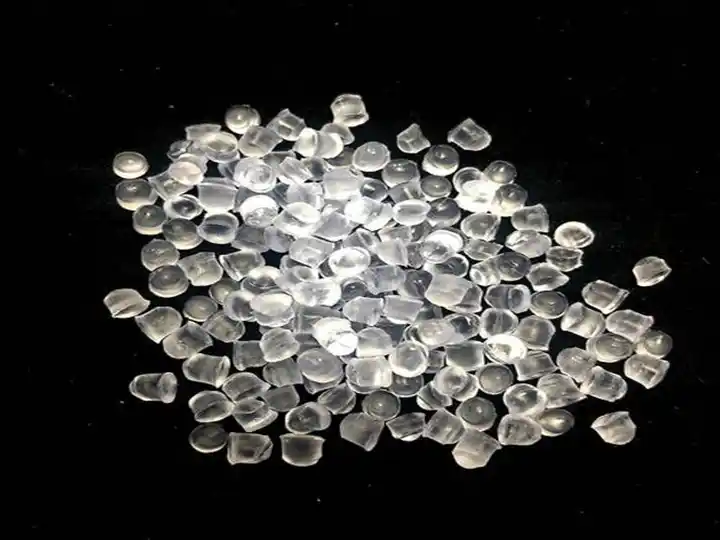
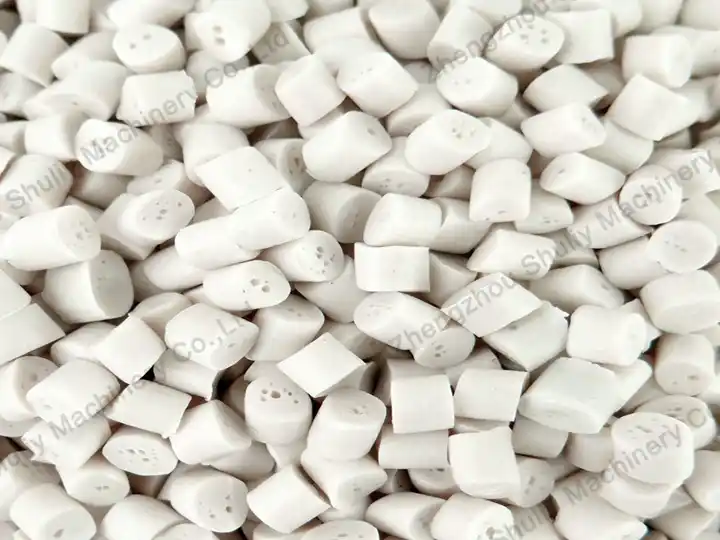
Engineering Plastics
- PC (Polycarbonate)
- PA (Nylon / Polyamide)
- PBT (Polybutylene Terephthalate)
- PET (Polyethylene Terephthalate)
- PMMA (Acrylic)
Recycled Plastics & Blends
- Crushed plastic materials
- Plastic flakes and film scraps
- Plastic compound blends
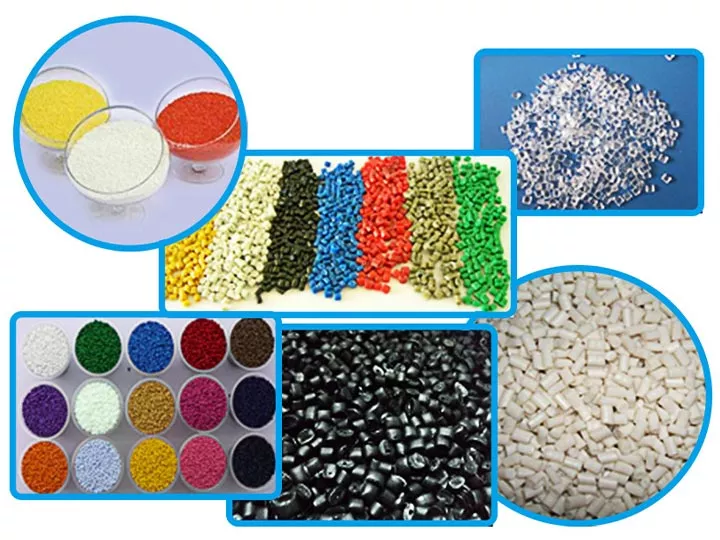
Main components of a plastic pellet dryer
Main Components of a Plastic Pellet Dryer
- Hopper – Stores the plastic pellets during drying
- Heating System – Provides the required heat to remove moisture
- Hot Air Blower – Circulates hot air evenly throughout the dryer
- Temperature Control System – Regulates and monitors the drying temperature
- Base Support Frame – Provides stability and structural support
- Filter Unit – Removes dust or impurities from the circulating air

Additional Components
- Motor – Drives the fan or feeding system
- Drying Barrel (Drum/Chamber) – Main container where the drying takes place
- Feeding Barrel / Loading Tube – Guides the material into the hopper
- Ladder – For operator access to the top feeding point
- Belt or Pulley Cover – Ensures operational safety
- Flange Support Column – Strengthens the structural connection
- Feeding Screw / Auger – Transports pellets into the dryer
- Electrical Control Box – Houses electrical components and a control panel
- Support Frame / Stand – Supports other mounted parts
- Recycling Discharge Port – Allows for recirculation or unloading
- Feeding Hopper – Initial entry point for raw plastic pellets
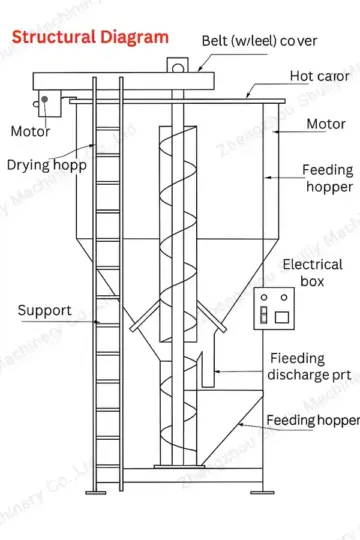
How does a plastic pellet dryer work?
The plastic pellet dryer heats the air through a heating system and circulates the hot air into the drying chamber, where it fully contacts the pellets to remove moisture. Meanwhile, stirring or conveying devices ensure even heating of the pellets. The moist hot air is expelled outside, and a temperature control system adjusts the heat in real time. Finally, the dried plastic pellets are discharged, ensuring they reach the desired drying quality.
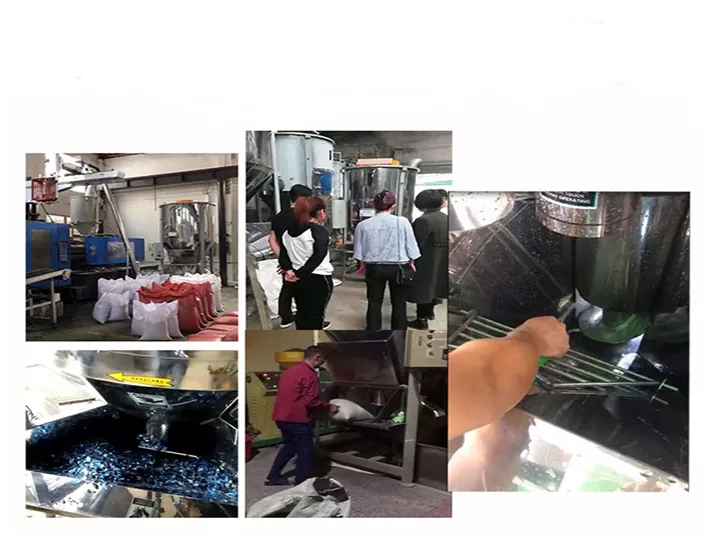
The plastic pellet drying process
The vertical plastic granules dryer is mainly used for mixing and drying multi-color plastic pellets. The plastic pellets enter from the feed hopper and slide upward along the surface of the blades under the propulsive force of the spiral blades. Then they are scattered around the barrel under the action of centrifugal force from the upper part.
Scattered materials continue to move downward, by the circulation of the material outlet, and the barrel of the circulation of the material outlet is constantly driven by the spiral blades to lift. This repeated cycle to achieve the purpose of mixing.
At the same time, the air is sent to the electric heating box by the blower, heated into hot air, and then automatically controlled by the temperature control table to uniform hot air through the material layer. Plastic pellets get continuous hot air blowing in the process of falling. This is the plastic pellet drying system of the vertical plastic pellet dryer.
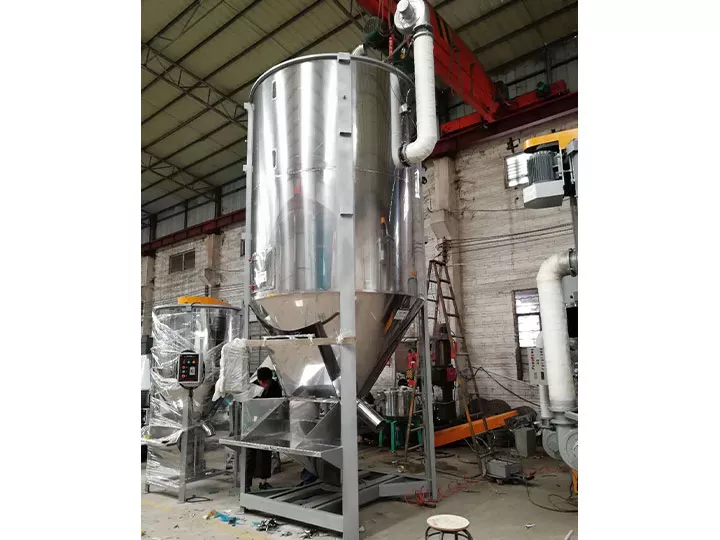
What is the price of a plastic pellet dryer?
The price of a plastic pellet dryer can vary significantly based on several factors:
- Size and Capacity: Larger dryers with higher capacities tend to be more expensive.
- Brand and Quality: Well-known brands or those known for their high quality might come at a higher price point.
- Features and Technology: Dryers with advanced features or innovative drying technologies may be priced higher than basic models.
- New vs. Used: New plastic granule dryers typically cost more than used or refurbished ones.
- Additional Components: Certain dryers might come with additional accessories or features that could affect the overall cost.
- Market Demand: Prices can also vary based on market demand and availability.
Generally speaking, smaller plastic pellet dryers might start at a few thousand dollars, while larger industrial-grade dryers could range anywhere from tens of thousands to over a hundred thousand dollars or more. You can contact us for an updated quote.
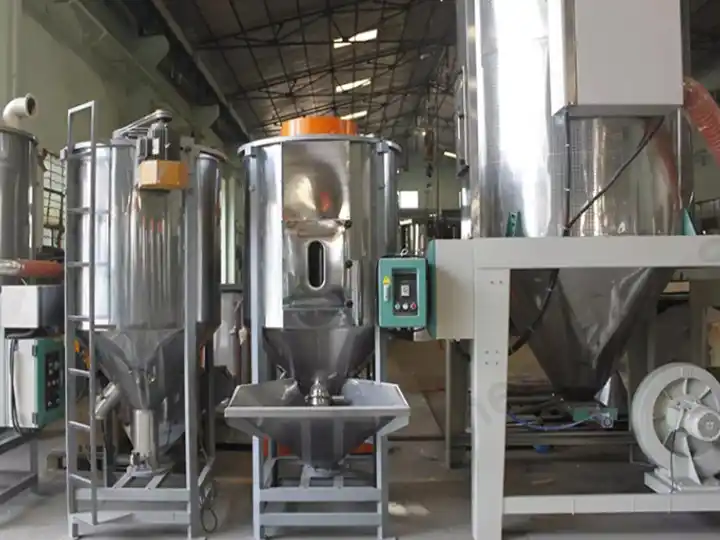
Factors affecting the drying of plastic pellets
- Drying temperature. Heat is the key to opening the joint force between water molecules and a moisture-absorbing polymer. When it is higher than a certain temperature, the gravitational force between water molecules and polymer chains will be greatly reduced, and water vapor will be taken away by the dry air.
- Dew point. In a vertical plastic pellet dryer, the wet air is first removed so that it contains very low residual moisture (dew point). Then, its relative humidity is reduced by heating the air. At this point, the vapor pressure of the dry air is low. By heating, the water molecules inside the particles are freed from bonding forces and spread to the air around the particles.
- Time. In the air around the particles, the absorption of heat and the diffusion of water molecules to the surface of the particles need a certain amount of time. And the time required for drying different materials is different. Therefore, the user should know in detail the time it takes for a material to be effectively dried at the proper temperature and dew point.
